
views
Subtracting Cell Values

Open Excel. It's a green app with a white "X" on it. If you would rather use a pre-existing Excel document, instead double-click the Excel document in question.

Click Blank workbook (PC) or Excel Workbook (Mac). It's in the top-left side of the "Template" window.
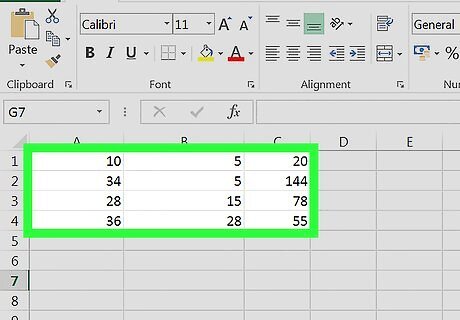
Enter your data if necessary. To do so, click a cell, type in a number, and press ↵ Enter or ⏎ Return.
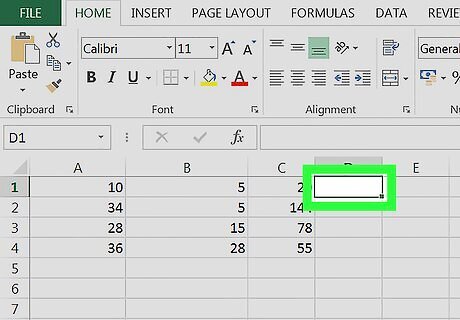
Click an empty cell. This will select the cell.
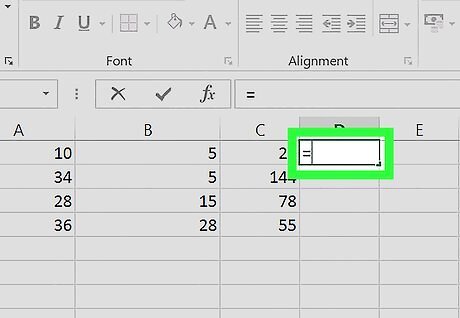
Type "=" into the cell. Exclude the quotation marks. You'll always type an "equals" sign prior to inserting a formula in Excel.
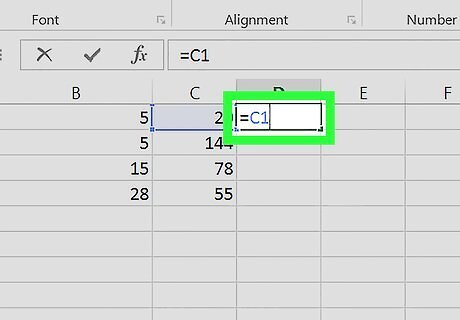
Type in a cell's name. This should be a cell with data from which you wish to subtract other cells' value(s). For example, you would type "C1" to select the number in cell C1.

Type - into the cell. You'll see it appear after the number you entered.
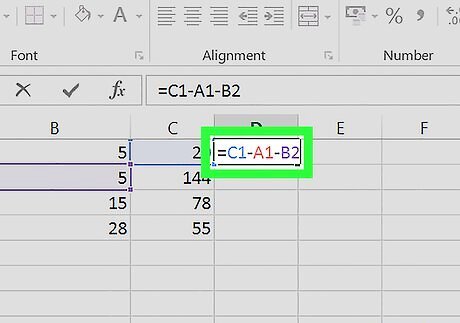
Type in another cell's name. This should be a cell whose value you wish to subtract from the first cell's name. You can repeat this process with multiple cells (e.g., "C1-A1-B2").

Press ↵ Enter or ⏎ Return. Doing so will calculate the formula entered in the cell and replace it with the solution. You can click on the cell to view the original formula in the text bar directly above the row of letters.
Subtracting Within a Cell

Open Excel. It's a green app with a white "X" on it.

Click Blank workbook (PC) or Excel Workbook (Mac). It's in the top-left side of the "Template" window.

Click a cell. Unless you plan on creating data using this workbook, the cell you select is not important.
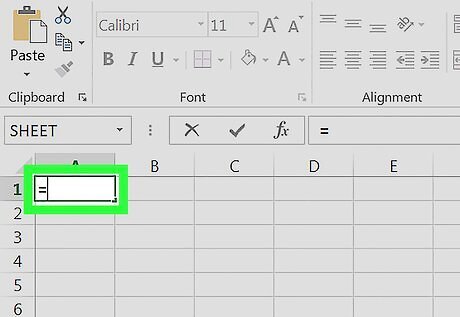
Type "=" into the cell. Exclude the quotation marks. This will set the cell up for a formula.
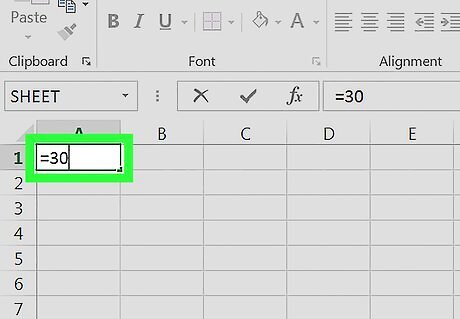
Type in a number from which you wish to subtract. It will appear in your selected cell to the right of the "equals" sign. For your budget, for example, you might type your month's income into this cell.
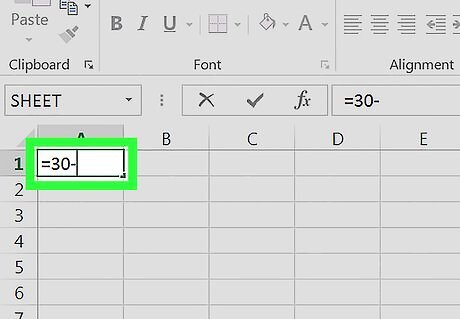
Type - into the cell. You'll see it appear after the number you entered. If you decide to subtract multiple numbers (e.g., X-Y-Z), you'll repeat this step after each subsequent number excluding the last one.
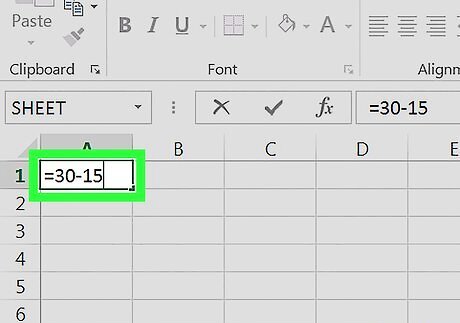
Type in a number you wish to subtract from the first number. If you're calculating budget, you might type an expense into this cell.
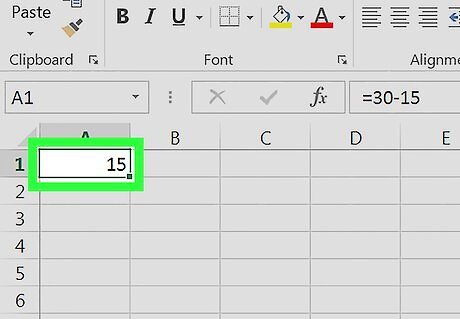
Press ↵ Enter or ⏎ Return. Doing so will calculate the formula entered in the cell and replace it with the solution. You can click on the cell to view the original formula in the text bar directly above the row of letters.
Subtracting a Column

Open Excel. It's a green app with a white "X" on it. If you would rather use a pre-existing Excel document, instead double-click the Excel document in question.

Click Blank workbook (PC) or Excel Workbook (Mac). It's in the top-left side of the "Template" window.
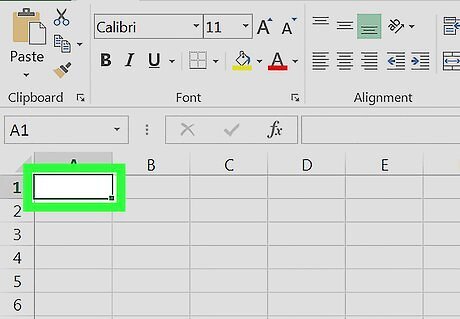
Click a blank cell. Doing so will select it.
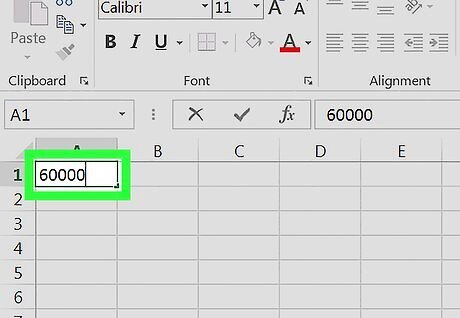
Enter your main number. This is the number from which the rest of the column will be selected. For example, you might type in your yearly salary here.
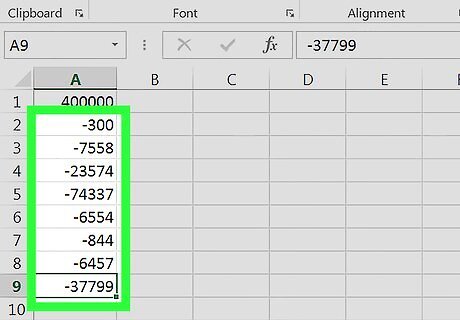
Enter any subtractions in the cells below. To do so, you'll type in a negative version of the number you wish to subtract (e.g., if you wish to subtract 300, type in "-300"). You'll type in one subtraction per cell. Make sure each of the numbers you enter are in the same column as the main number. For the salary example, you'd likely type "-" followed by an expense for each box.
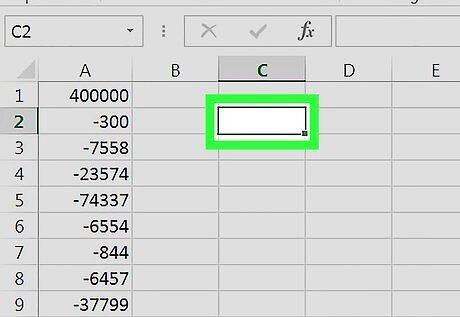
Click a blank cell. This time, the cell doesn't need to be in the same column as the main number.
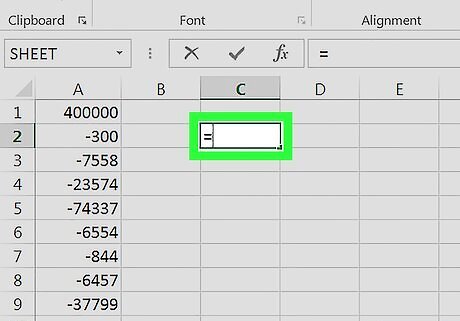
Type "=" into the cell. Exclude the quotation marks. Doing so will set up the cell for a formula.

Type SUM into the cell. The "SUM" command adds items together. There isn't an official "subtract" command, which is why you enter numbers in the negative format above.
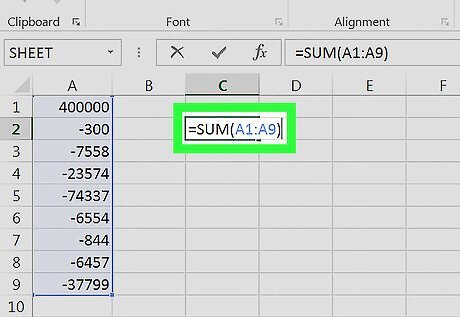
Type (CellName:CellName) in after SUM. This command adds all cells in a column from the first cell number value through the last cell number value. For example, if the K1 cell is your main number and the last cell in the column with data in it is K10, you'd type "(K1:K10)".
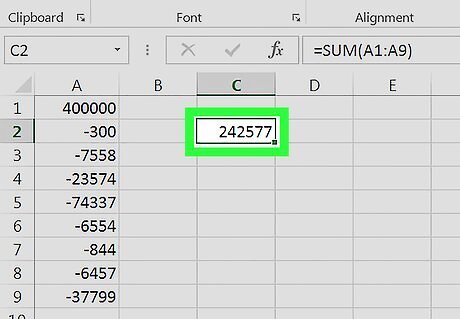
Press ↵ Enter or ⏎ Return. Doing so will run the formula in your selected cell, thereby replacing the formula with the final total.




















Comments
0 comment